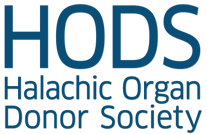Brain Death
 Download “The Heart” |
 Download “The Normal Brain Anatomy” |
Brain Death
Background
Organs for donation are usually taken from a person whose heart is still beating and was declared dead because the patient’s brain had died. Some Rabbis, however, view a beating heart as a sign of life (and prohibit removing organs) while other Rabbis do not deem a beating heart sufficient for life (requiring brain function and autonomous) and therefore allow donation from a brain dead patient.
The Halachic Organ Donor Society recognizes this debate and encourages organ donation at either stage by offering a unique organ donor card that allows a person to choose donation at brain death or alternatively at cessation of heartbeat.
From a medical perspective, however, it is difficult to recover organs after cardiac death. In addition, the heart and lungs cannot be recovered once the heart dies. Therefore the decision about when to donate is significant. It is important to understand what brain death is from a medical perspective before applying halacha. Click here to watch a half hour video explaining brain-stem death.
What is Brain-Stem Death?
Medical Status:
The brain consists of the brain-stem (the top of the spinal chord) and the larger part of the brain called the cortex which covers the brain-stem. The brain-stem controls many neurological functions, the most important one being breathing. A person who suffers a severe head trauma, typically has swelling of the brain. The increased internal pressure in the skull (ICP: Intra-Cranial Pressure) does not allow blood to flow into the cranium resulting in oxygen deprivation for the brain. Brain cells, extremely sensitive to oxygen loss, begin to die and liquefy (lysis).
A non-functioning brain-stem means the person is unconscious, cannot breathe on his or her own, and within a few minutes the heart will stop pumping (because it is deprived of oxygen.) With the invention of the respirator, however, it has become possible to keep artificially oxygenated blood circulating allowing the heart and other organs to continue functioning for another few days or even weeks.
No one, however, has ever “woken up” from brain-stem death. It is irreversible and ultimately there is complete systemic failure, including the heart. The reason why BSD is irreversible is because from the onset of brain-stem death, the brain begins to liquefy (lysis).
The American Academy of Neurology criteria were changed in response to the observation that there was no recovery after just one exam that determined brain death, and that two exams were not necessary. A study published in January, 2011 showed that of 1,229 adult and 82 pediatric patients diagnosed as brain dead on a first neurological examination, the number who were not diagnosed as brain dead on a second examination was zero. (See report.)
Legal Status: Concerning the legal and medical status of brain-stem death: the majority of the countries in the world, and all 50 U.S. States, accept the 1968 Harvard Criteria of brain-stem death as the definitive moment of death.
Many terms are used by physicians and laymen that are not well understood: Death of a Person, Death of an Organ, Brain Death, Brain-stem Death, Coma, Deep Coma, Persistent Vegetative State (PVS), and Clinical Death. Below is a brief primer on some of the terms.
Death of a Person: When is a person dead is the issue under debate. Questions to consider are is a person dead when the soul leaves the body, when a person’s body disintegrates, when the heart stops beating, when the respiration irreversibly stops? An organism can be dead, but its organs can remain alive for some time afterwards, such as heart, kidneys and liver. At what point would you consider the organism ‘dead?’
Death of an Organ: An organ can cease to function, but its cells can remain alive and slowly die at some point later in time. At what point would you consider an organ to be ‘dead?’
Brain Death: The brain mainly consists of the cortex (the larger part of the brain) and the brain-stem. Brain Death has been used mistakenly to describe different medical realities. It should be used to describe death of the cortex (the larger part of the brain) and the brain-stem.
Brain death is a clinical diagnosis. Meaning bedside exams can reveal brain-stem death. Blood flow studies are only confirmatory, not diagnostic. If a proper exam, including apnea tests weren’t done, it doesn’t matter what the blood flow study shows. Also, one blood flow study is only one snapshot, not an absence of flow over a long period. If there were two studies over a period of time, both showing no blood flow, it would be confirmatory of brain-stem death.
Brain-Stem Death: The brain-stem is dead and implies the cortex is dead as well. According to U.S. and Israeli law organs are only recovered from people who are dead as confirmed by brain-stem death. Meaning their brain no longer functions, they are unconscious, inanimate, and their heart continues to beat with the artificially help of a mechanical respirator that feeds the blood oxygen. Inevitably, in spite of the ventilator the heart ultimately shuts down. We will discuss BSD in more detail below, from a medical, halachic and legal status.
Coma, Deep Coma, PVS: These terms imply the cortex is not working but the brain-stem is working and the patient might be able to breathe on his or her own. Deep Coma and PVS imply this is long term and irreversible. People often confuse PVS with Brain-Stem Death. They are not the same thing and organs are not recovered from patients who are in a coma or PVS.
Clinical Death: A term typically used to describe someone whose heart has stopped beating but possibly may be resuscitated. We sometimes hear stories of people who were ‘clinically’ dead but revived.
